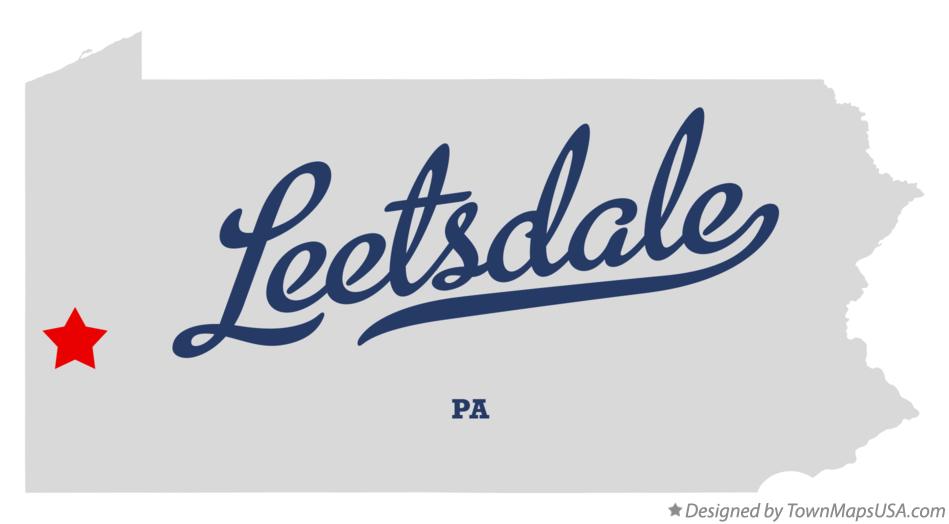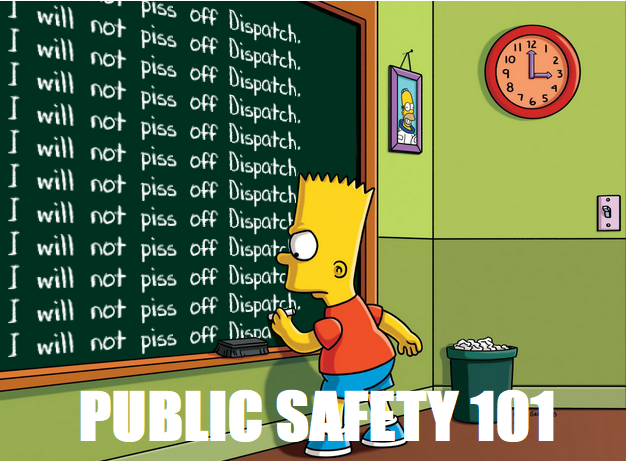
A young adult male solicits money from passing motorists along Ohio River Boulevard at the Sewickley Bridge entrance. Taken January 19, 2016.
One of the more interesting e-mail newsletters I receive is Eat That, Read This by Adam Shuck. Mr. Shuck finds news stories from many local sources, and posts them with links and insightful, snarky commentary into a mostly daily e-mail digest. It’s a refreshing way to plug into what’s going on in the city and other parts of the region.
I thought I would try to emulate the style of this newsletter, with smaller posts about several topics instead of one long essay. For me, it seems easier to work on something comprised of snippets that seek to inform, give an opinion, and/or encourage the reader to learn more if they want to. I hope this seems easier for you to “digest” as well.
Edgeworth
Mr. Shuck keeps his eye on our area, as evidenced by a post from his January 28 edition:
Speaking of the Sewickley area, this guy is the reason that Edgeworth can’t have a Chipotle.
The most recent update to the saga of developing an Edgeworth parking lot into food service and retail space has the proposal in limbo, due to the inability of the property owner to obtain the required agreement with an adjoining owner for sharing the access road between the  properties.
properties.
According to the Sewickley Herald account of the most recent Edgeworth council meeting, Esmark CEO Jim Bouchard has apparently been less than a willing participant in this process, being unavailable for discussions about such an agreement.
Edgeworth Council made an agreement a precursor for approval of the Chipotle development, and was unwilling to grant an extension. The developer is not pleased, and I frankly don’t blame him. This type of relationship should be a prerequisite in development applications – before a spade of earth is turned.
The business biography that Mr. Shuck unearthed features an interesting quotation from Mr. Bouchard:
We have to learn how to play in their sandbox and do it in the most cost-effective way.
I guess he’s just not thrilled with letting anyone else play in his sandbox…for now.
It’s up to Mr. Bouchard to at least come to the table, and up to Edgeworth and other local governments to assure that these types of messes don’t happen in the first place.
<=>
Two other things that I’ve noticed about this situation in recent days – First, the proposed Chipotle site, described by others as a parking area that is not needed, has been approaching half full on many weekdays when I’ve driven by.
Secon d, that situation may change as the spring approaches, with the imminent departure of four well-established family physicians from their Heritage Valley practice in the Esmark building, which they moved into not even three years ago from offices in what was known as “Doctors Row” in Sewickley. In other words, they’ve been around here a while.
d, that situation may change as the spring approaches, with the imminent departure of four well-established family physicians from their Heritage Valley practice in the Esmark building, which they moved into not even three years ago from offices in what was known as “Doctors Row” in Sewickley. In other words, they’ve been around here a while.
According to a letter sent to patients in January, these four doctors will re-establish themselves in April at an existing family practice in Cranberry Township, affiliated with the Allegheny Health Network.
This move affects many local residents who, if unable/unwilling to travel to Cranberry or do not have compatible insurance coverage, will be forced to change what in many cases is a long-standing relationship with their primary care doctor.
Those changes warrant additional explanation, which I hope to be able to get down the road.
<=>
In other events that defy explanation, Edgeworth is appealing the court order that permitted an Oliver Road resident to cut down three large trees damaging her sidewalk. According to the Herald account, the resident’s lawyer is not happy, and thinks that Edgeworth taxpayers should be not happy as well.
I think he has a point – it feels as if the borough is playing chicken with the 85-year-old resident over who will be the first to flinch at the time and legal fees involved in pursuing such an appeal.
Such is the nature of the continued approach of many governments to the lockstep enforcement of codes and ordinances that appear well-intentioned, but just turn out to be bad form.
<=>
Of course, there are those situations where government should have a foothold in land use, but decline to do so. Fortunately, the new owner of ‘Muottas’ seems to be a reasonable individual, or one highly sensitive to how he is perceived by the community – at least so far.
Thomas Tull is receiving praise from preservationists for his decision to move the old house to another location on the extensive property that sits atop the first hill between Little Sewickley Creek and Camp Meeting Roads in Edgeworth and Leet Township.
As the Post-Gazette report also pointed out, there are other concerns:
“The entire development project will [cost] many millions of dollars and the cost of relocating and renovating the Walker house is a big part of our overall budget,” (Lucas Piatt of developer Millcraft Investments) said.
This continues to raise questions as to how construction and other vehicles will access the site, and how much of a role Camp Meeting Road, through-travel municipalities such as Leetsdale, and Allegheny County, which owns Camp Meeting Road, will play. I’ll keep an eye on this.
<=>
Leetsdale
An online video report in the January 21 Beaver County Tim es (since placed behind their annoying subscriber-only paywall) included an interview with Leetsdale council member Joe McGurk about the options being considered by the borough regarding the use of the Henle Park Splash Pad.
es (since placed behind their annoying subscriber-only paywall) included an interview with Leetsdale council member Joe McGurk about the options being considered by the borough regarding the use of the Henle Park Splash Pad.
This facility, which is exceedingly popular in the summer months, has been the topic of controversy in recent years over the number of non-residents using it, the impact on the municipal budget in terms of water usage, as well as parking in the immediate area of the facility.
Apparently, the 2011 arrangement between a local precious metals dealer and the borough to help pay those water bills didn’t last longer than perhaps a year, so the clamor about the above difficulties has begun to resonate with council again.
I e-mailed Mr. McGurk with a few questions about the Times report, which included:
Has council done cost estimates related to the imposition of a non-resident user fee for the splash pad? How much will it cost to develop a system for identifying borough residents, securing the facility, and paying staff to oversee an admission and ticket sale process?
Mr. McGurk replied:
The Parks and Rec Board have been tasked with coming up with a workable plan to be shared with Council before the coming season. Everything is open for discussion.
According to the Leetsdale Borough website, the borough is trying to fill three vacancies on that Parks and Recreation Board – the website also indicates that the current membership of the seven-member board currently consists of the wives of two council members – one of them being Mrs. McGurk.
There’s an opportunity here for Leetsdale residents to step up and get involved in a key aspect of the character and livability of their community.
<=>
Another key component of a community’s character is how citizens are informed and protected in times of emergency. The Lubrizol Fire from November of last year continues to resonate with locals, especially with the report last week that Chapman Properties, owner of Leetsdale Industrial Park, intends to rebuild the destroyed plant.
That rebuilding process  continues this month with the borough’s Planning Commission, which counts Fire Chief (and now Constable) Ernest Logan among its members. This is good news, considering that Chief Logan is eminently qualified in the areas of public safety and incident management.
continues this month with the borough’s Planning Commission, which counts Fire Chief (and now Constable) Ernest Logan among its members. This is good news, considering that Chief Logan is eminently qualified in the areas of public safety and incident management.
The lessons of the Lubrizol fire have not been lost on borough responders and emergency managers. The fire department page of the January borough newsletter included the following:
One of the key points…is that the public needs to be better informed as to what to do should something like this happen again. To that end, the Public Safety Committee is putting a guidance document together that will be sent to every home in Leetsdale.
I’m looking forward to receiving this information. What would really be great is if documents like this could be posted online – along with the borough newsletter (including back issues) and agendas and minutes of council, planning commission, and zoning hearing board meetings. Neighboring municipalities such as Edgeworth, Leet, and Sewickley seem to be able to do this, and keep the content up to date.
Bicycle Lanes and Cart Paths
John Orndorff is a man on a mission, as is the organization he is representing to Quaker Valley area governments, the Ohio River Trail Council. Through their “Complete Streets” initiative, the council wants to make sure that area roads are safely designed and consistently marked and signed to optimize use by as many transportation modalities as possible, including pedestrians and bicyclists. They also want to see these roadways linking into a single, marked trail system that extends through numerous municipalities. Their website is slick and comprehensive, filled with maps, studies and related reports.
is slick and comprehensive, filled with maps, studies and related reports.
To accomplish this trail optimization, there must be buy-in from our disparate patchwork of local governments, and according to the Herald Mr. Orndorff has been busy lobbying the various borough councils to obtain their support.
What hasn’t been reported in at least two media accounts is Mr. Orndorff’s unique qualifications for this sort of lobbying effort. Mr. Orndorff is also a member of Glen Osborne Borough Council.
So long as Mr. Orndorff remains a municipal official while trying to present this plan to officials in his own municipality as well as others, his elected position is germane to any discussions about, or reporting on, those efforts.
Edgeworth councilman David Aloe was quoted by the Herald as stating “Pennsylvania wasn’t built for bike traffic. The roads were built for cars.” I would take that a step further with the roads that are being considered for designation – they were built for horse-drawn wagons, and have been adapted over nearly two centuries to accommodate modern conveyances.
I believe that the cause of the trail council is a noble one, especially with regard to achieving a standardization of traffic management strategies on municipal streets and across municipal boundaries.
However…as attractive as making a bike trail system that traverses not only our area, but links into the Midwest and Mid-Atlantic states seems to be, we have to be honest with how much our roads can realistically handle – hopefully without going through the disagreement that has accompanied similar efforts in Pittsburgh.
Have a great month ahead.


































Hi, great blog. Monaca resident here, and a frequent cyclist along the Sewickley-Rochester corridor. There’s a lot of cyclists that are using these routes now, and there’s not a lot of signage/ striping/ infrastructure to help us ^all^ use the roads – cyclists, drivers, commercial trucks, etc. Many communities just like ours have been able to implement shared-use roads in an effective manner; it’s not magical, it’s just implementing established best practices.
Part of the reason for conflict between drivers and cyclists is the absence of signage/ markings/ routes, and so drivers are surprised by cyclists and may think they don’t belong – cyclists do belong, they’re entitled to use the roads, and we can either ignore the issue and continue to see conflict and injury, or address the issue and see cooperation and economic development.
I’d be real happy to join anybody who’d like to see it from the cyclist’s perspect on a safe group ride along Beaver Street and Duss Avenue – please let me know if you’d like to try it!
I guess the idea is that the roads are presently being used mainly by cars (though there are a fair number of cyclists using them right now–I myself have ridden your roads, for example). Therefore, they always should be?
As you point out, they were originally designed for horse-and-buggy traffic. Over the years, they were adapted to various forms of traffic, including bicyclists (before cars came along, bicyclists were the primary advocates for paved roads in the so-called “Good Roads” movement).
Why not let this process continue? if there is a need to accommodate bike traffic, is it really so hard to imagine a way to do so? When experienced cyclists are being killed, on a fairly regular basis, while riding as safely as they know how–as they are–isn’t it reasonable to see if there’s a way to make things safer?
One reason the Sewickley-to-Ambridge section is important to cyclists is that the terrain means the Ohio River Valley is the obvious bike route, but the options on the other side of the river, in particular Route 51, are currently very dangerous. Three cyclists have been struck by cars and killed on Route 51 in the past two years. http://pittsburgh.cbslocal.com/2015/09/12/cyclist-memorial-beaver-county/ . Currently, this leaves Beaver Street as the obvious choice for cyclists wanting to travel between Sewickley and Ambridge. I’ve biked it; it’s a pretty good bike route. Everyone in the area should get out on bicycle and use that road more often. Having more cyclists on the road will make the area safer for everyone.
Pingback: Summer / Autumn Decennial Digest | John Linko
Pingback: October Shorts – Books, Babies, Backpedaling, and Basketball | John Linko